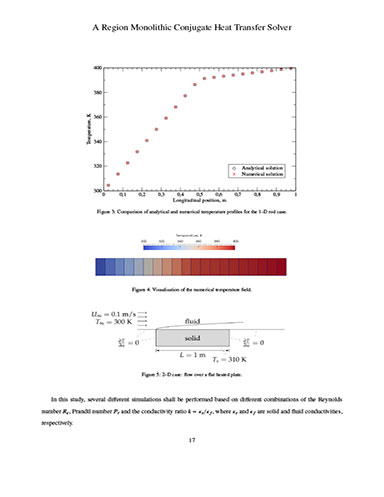A Region Monolithic Conjugate Heat Transfer Solver
SimScale's cloud platform, offering ease of use for complex geometries, automatic contact detection, automated meshing and virtually limitless scaling capabilities for CHT industrial–scale problems that often involve complex geometries.

May 13, 2021
The paper presents an implicit, region coupled conjugate heat transfer (CHT) solver based on arbitrary polyhedral finite volume method (FVM).
The solver can handle multiple fluid and solid regions that are solved monolithically, leading to fast convergence and strong parallel scalability. Ghost fluid method (GFM) is used to enforce the continuity of temperature and heat flux across the interfaces in an implicit manner. Verification and validation of the solver is presented for three cases with increasing complexity, the last case being an electronics cooling application compared to experimental measurements.
Conjugate heat transfer (CHT) is an often encountered problem in di erent branches of engineering: from classical heat exchangers (HE) to growing electronics cooling (EC) applications due to the proliferation of cloud infrastructure.
A common CHT problem often includes a single or multiple fluids and multiple solids, where the conduction of heat through the solids and convection and conduction through the fluids is of interest. Some of the CHT problems are tackled with empirical (0-D) models, which are easy to use but hard to generalize, especially when one considers the complexity and uniqueness of geometries involved.
Compared to empirical models based on analytical expressions, high–fidelity computational fluid dynamics (CFD) solutions provide extremely accurate results taking into account possible intricacies of the geometry and the complexity of the real–life operating conditions with few approximations.
Fill out the information below to download the resource.
Latest News








